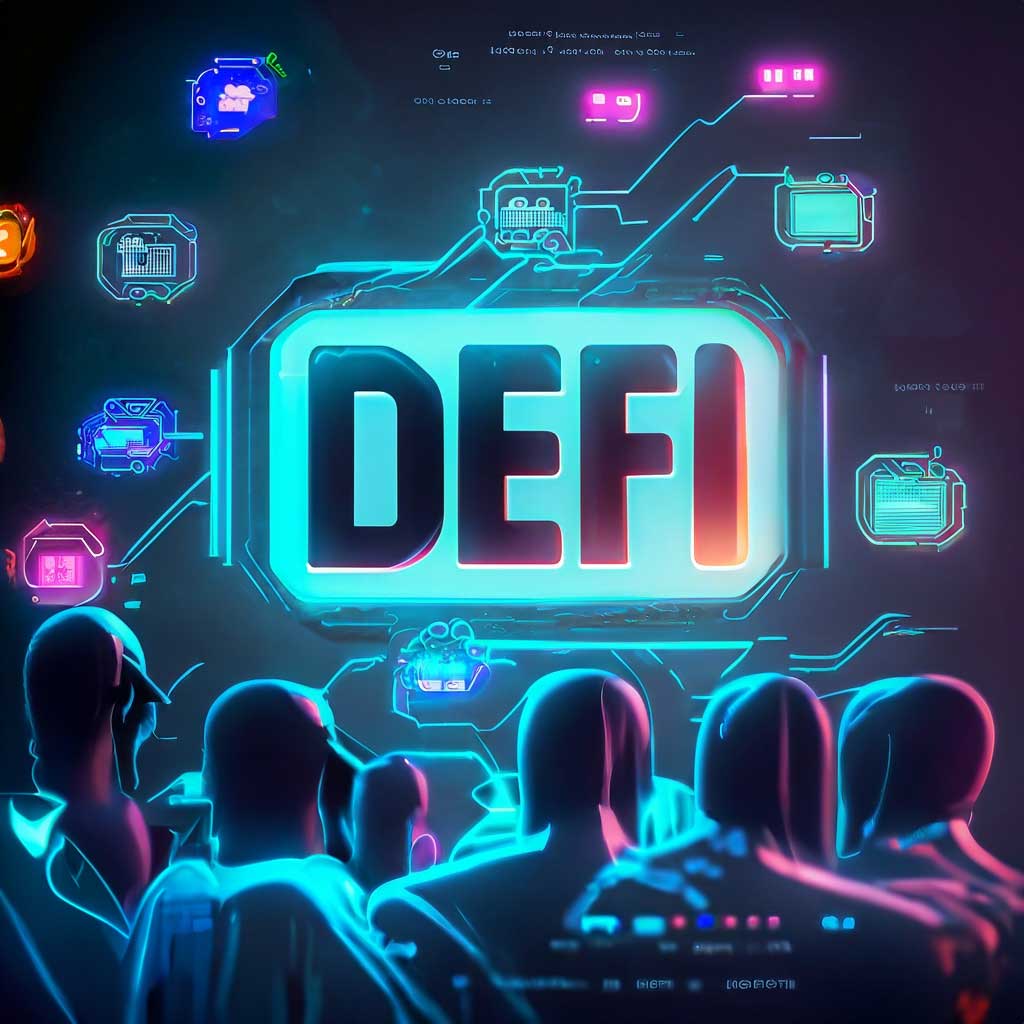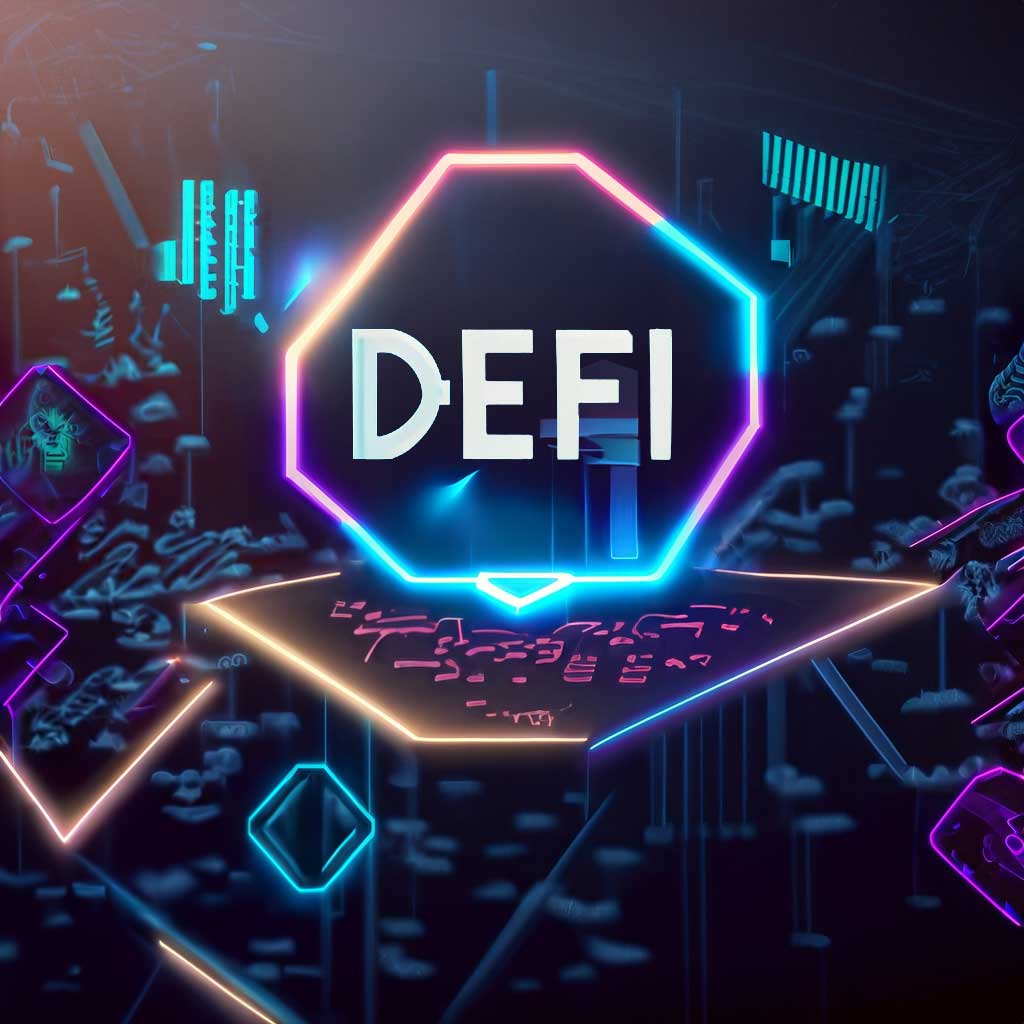Welcome to the world of Decentralized Finance (DeFi), where traditional finance meets the power of blockchain technology. In this blog, we’ll explore the basics of DeFi, its benefits, risks, and how it is impacting the traditional financial system. We’ll also take a look at some of the most popular DeFi applications. With DeFi, we can create a financial system that is more secure, transparent, and accessible to everyone. So let’s dive in and learn more about this revolutionary technology!
What is Decentralized Finance (DeFi)?
Decentralized finance (DeFi) is a movement that seeks to bring the power of blockchain technology to traditional financial services. It is a form of financial technology that uses smart contracts and distributed ledger technology to provide financial services without the need for a centralized third party. DeFi is based on the idea that everyone should have access to the same financial services, regardless of their geographical location or financial status.
How DeFi Works:
DeFi works by utilizing smart contracts and distributed ledger technology to provide financial services. Smart contracts are self-executing contracts that are written in code and stored on a blockchain. They are used to automate processes and execute transactions without the need for a third-party intermediary. Distributed ledger technology (DLT) is a shared digital ledger that records and stores information across a network of computers. This technology is used to store and process data without the need for a central authority.
The Potential of DeFi:
The potential of DeFi is immense. It has the potential to revolutionize the way we access and use financial services. DeFi could enable people to access financial services without having to rely on a centralized third-party. It could also reduce costs and increase efficiency by automating processes and transactions. Additionally, DeFi could provide access to new types of financial products and services, such as decentralized exchanges, peer-to-peer lending, and insurance. Finally, DeFi could open up financial services to people who may not have access to traditional banking services.

Benefits of DeFi
Decentralized Finance (DeFi) is a new form of finance that is revolutionizing the traditional financial system. It is powered by blockchain technology and is designed to provide increased accessibility, transparency, lower transaction costs, and unrestricted global access. In this chapter, we will explore the benefits of DeFi and how it is creating a more efficient and secure financial system.
Increased Accessibility:
DeFi is making financial services more accessible to everyone by removing the need for a centralized authority. This means that anyone, regardless of their location or financial background, can access the same financial services. DeFi is also making it easier for users to access financial services, as it eliminates the need for complex paperwork and long wait times.
Increased Transparency:
DeFi is creating a more transparent financial system by providing users with access to real-time data. This data is publicly available and can be used to make more informed decisions. Additionally, all transactions are recorded on the blockchain, making it easier for users to track their funds.
Lower Transaction Costs:
DeFi is reducing transaction costs by eliminating the need for middlemen. This means that users can access financial services without having to pay high fees. Additionally, users can access services from anywhere in the world without having to worry about exchange rates or other fees.
Unrestricted Global Access:
DeFi is providing users with unrestricted global access to financial services. This means that users can access services from anywhere in the world without having to worry about geographical restrictions. Additionally, users can access services without having to worry about local regulations or laws.
DeFi is revolutionizing the traditional financial system by providing users with increased accessibility, transparency, lower transaction costs, and unrestricted global access. It is creating a more efficient and secure financial system that is accessible to everyone.

Risks of DeFi
The decentralized finance (DeFi) space is growing rapidly, but with it comes a range of potential risks. While DeFi has the potential to revolutionize traditional finance, there are some risks to consider. These include regulatory uncertainty, lack of liquidity, and security risks.
Regulatory Uncertainty:
Regulatory uncertainty is a major risk in the DeFi space. As the technology is still relatively new, there is no clear regulatory framework in place. This means that users may be exposed to legal risks and may not be able to access the full range of DeFi services.
Lack of Liquidity:
Another risk in the DeFi space is the lack of liquidity. Many DeFi protocols are built on top of decentralized exchanges, which can be highly illiquid. This means that users may not be able to easily access the funds they need, or may have to pay high fees to do so.
Security Risks:
Lastly, security risks are a major concern in the DeFi space. As DeFi protocols are built on top of smart contracts, they are vulnerable to malicious attacks. This means that users may not be able to access their funds, or may even lose them entirely.
Overall, while DeFi has the potential to revolutionize traditional finance, there are some risks to consider. Regulatory uncertainty, lack of liquidity, and security risks are all potential issues to be aware of. It is important for users to do their own research and make sure they understand the risks before investing in DeFi.

DeFi in the Traditional Financial System
The rise of decentralized finance (DeFi) has been a major disruptor to the traditional financial system. DeFi has the potential to revolutionize finance by offering a more efficient, transparent, and secure way to conduct financial transactions. By utilizing blockchain technology, DeFi provides a new level of access to financial services that has never before been seen.
DeFi is already shaking up traditional finance in a number of ways. For example, DeFi eliminates the need for expensive middlemen such as banks and financial institutions. This allows users to transact directly with each other, resulting in lower fees and faster transactions. Additionally, DeFi allows users to access a range of services that were previously only available to institutional investors, such as margin trading and lending.
DeFi also offers increased transparency and security. All transactions are recorded on the blockchain, which is immutable and secure. This provides users with peace of mind, knowing that their funds are safe and secure.
Furthermore, DeFi is driving innovation in the traditional financial system. By providing access to a range of services, DeFi is encouraging financial institutions to innovate and offer new products and services. This is resulting in a more competitive and efficient financial system.
In conclusion, DeFi is having a major impact on the traditional financial system. By providing access to a range of services, DeFi is driving innovation and providing users with a more secure and transparent way to transact. As DeFi continues to evolve, it is likely that it will continue to disrupt the traditional financial system in a positive way.

Popular DeFi Applications
Decentralized finance (DeFi) has become one of the most popular applications of blockchain technology. DeFi applications are designed to provide financial services that are not available in traditional finance. These applications are making it possible to access a wide range of financial services, such as lending, borrowing, trading, and investing, without the need for a centralized intermediary.
The Features of Popular DeFi Applications:
Popular DeFi applications offer a range of features that make them attractive to users. These features include:
- Open source code – Most DeFi applications are open source, meaning that anyone can view and audit the code. This provides users with greater transparency and trust in the system.
- Automated processes – DeFi applications are designed to automate many of the manual processes that are required in traditional finance. This makes it easier to access financial services and reduces the risk of human error.
- Accessibility – DeFi applications are typically accessible from any device with an internet connection. This makes it possible to access financial services from anywhere in the world.
- Low transaction costs – DeFi applications often have much lower transaction costs than traditional finance. This makes it possible to access financial services at a lower cost.
The Benefits of Using DeFi Applications:
The use of DeFi applications provides a number of benefits to users. These benefits include:
- Increased access – DeFi applications make it possible to access a range of financial services that are not available in traditional finance. This makes it possible to access services that would otherwise be inaccessible.
- Reduced risk – DeFi applications are designed to reduce risk by automating manual processes and providing transparency. This makes it easier to access financial services without the risk of human error.
- Lower costs – DeFi applications typically have much lower transaction costs than traditional finance. This makes it possible to access financial services at a lower cost.
- Greater control – DeFi applications are designed to give users more control over their funds. This makes it possible to access financial services without relying on a centralized intermediary.
In conclusion, DeFi applications are revolutionizing the way we access financial services. They provide users with access to a range of services that are not available in traditional finance, while reducing risk and lowering costs. By utilizing DeFi applications, users can access financial services from anywhere in the world, with greater control and transparency.

Conclusion
Decentralized Finance (DeFi) has the potential to revolutionize the traditional financial system by uniting blockchain technology with traditional finance. DeFi offers numerous benefits, such as increased liquidity, lower fees, and improved accessibility to financial services. However, there are also risks associated with DeFi, such as smart contract vulnerabilities, security risks, and lack of regulatory oversight.
The rise of DeFi applications has been remarkable, with popular applications such as MakerDAO, Compound, and Uniswap offering a plethora of services to users. Although DeFi is still in its early stages, it is clear that it has the potential to radically transform the traditional financial system. As the technology continues to develop, it is likely that DeFi will become an integral part of the financial system in the near future.
Ultimately, Decentralized Finance (DeFi) is an exciting new technology that has the potential to revolutionize the traditional financial system. With its numerous benefits and potential applications, DeFi is poised to become a major player in the world of finance.


